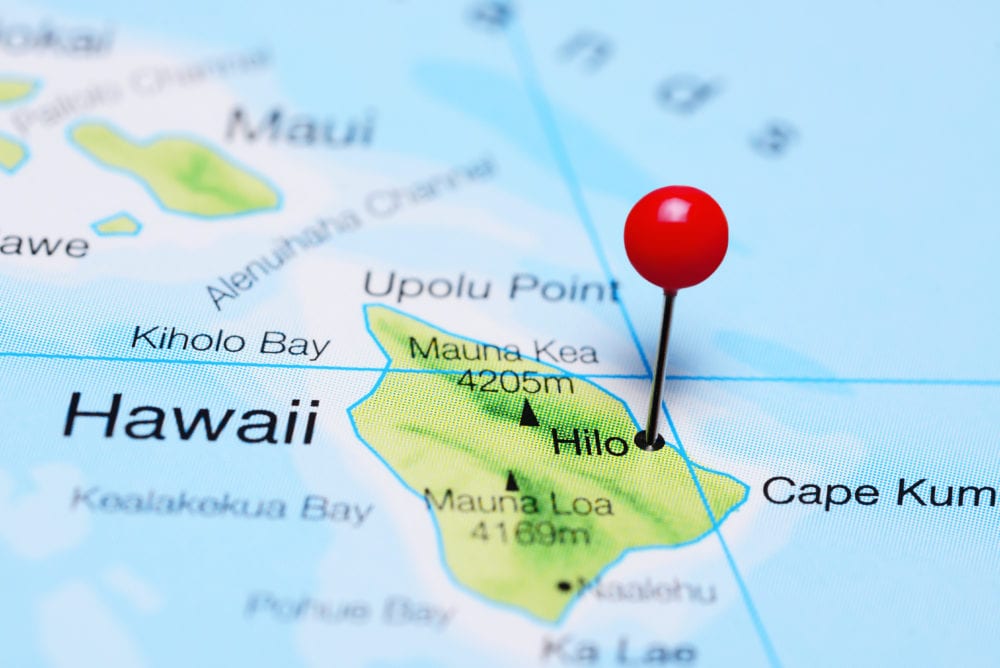The Hawaii County council planning committee voted 6–1 in favor of advancing short-term rental regulation Bill 108 to two final council votes. If passed in its current form, the bill will block new non-owner-occupied short-term rentals, limit where they can operate, and require registration with the planning department.
The state does not have local (city) governing bodies, so legislation effected by Hawaii County council governs the Island of Hawaii, also called the Big Island. The bill permits non-owner-occupied short-term rentals in resort-hotel districts, general commercial districts, village commercial districts, residential and commercial districts within the general plan resort and resort node areas, and multifamily districts for multifamily dwellings within condominium properties. Short-term rentals would not be permitted in agricultural zones due to an overriding state law regarding overnight accommodations in these areas.
An earlier draft of the bill also would have allowed short-term rentals in the downtown Hilo commercial district, but North Kona councilwoman Karen Eoff said this district was removed because of a legal language technicality, and the council will reintroduce it through later legislation.
The bill also calls for strict registration requirements, including that only those who operate a short-term rental on or before the effective date of the ordinance will be allowed to register, and they must initiate the registration within 180 days of the ordinance’s effective date. Registrants will be required to pay a one-time $500 registration fee.
For short-term rentals operating before the ordinance’s effective date in non-permitted zones, owners would be required to obtain a nonconforming use certificate (NUC) to continue operation. These applications would cost $250 and must also be submitted within 180 days of the ordinance’s effective date.
Other registration requirements include proof that all property taxes are paid in full, general excise and transient accommodations tax licenses, and a site plan showing rooms for rent and requisite parking available. Owners must adhere to good neighbor policies, be reachable (or appoint someone to be reachable) at all times and able to respond to an issue at the home within three hours, and include registration numbers in all advertising, among other requirements.
Prior to the vote, the council planning committee heard hours of public testimony. Proponents of the bill primarily cited noise, parking, and other guest nuisance issues.
Opponents called for economic impact studies by district and argued that the bill would hit the Kona and Puna districts the hardest, where much of the land is zoned for agriculture. Several noted the popularity of agritourism on the island. Opponents also noted the effect of the Kīlauea volcano eruption and lava flow earlier this year that wiped out many of the vacation rental homes in Puna and made much of the land zoned for agricultural use no longer usable as farmland.
Following testimony, Eoff said the bill was not a ban and stressed that it was only a starting point for legislation. “We are trying to protect neighborhoods and balance everybody’s needs,” she said.
The committee did not call for economic impact reports but did discuss how they may be able to address the agricultural zoning concerns and how to make accommodations for short-term rental owners affected by the lava flow.
Councilwoman Eileen O’Hara was the only committee member to vote against moving the bill forward, citing her concern with these issues. O’Hara represents the eastern side of Puna. “We need to come into modern times,” she said, referring to the 1976 state law barring overnight accommodations on farmland. “These laws were made for plantation days.” She called for change to the state law before supporting the bill moving forward, and she questioned how the county will address short-term rental properties following natural disasters.
Eoff noted that the bill includes the ability of owners with farmland properties to apply for an NUC if the lot was created prior to 1976.
Michael Yee, Hawaii County’s planning department director, discussed many of these variables with the committee. He acknowledged that the council and planning department will need to continue work on the regulations and address these concerns but advocated for moving the bill forward as a starting point.
“This is part one—there will need to be a part two,” Yee said. “We’re trying to bite off what we can at the county level for now. There are ag areas that should be considered—how we address that we’ll have to be careful about.”
Harry Kim, mayor, also testified in favor of moving the bill forward. “This is about zoning for the island, which is needed,” he said. “We cannot allow our businesses to go on without regulation.”
The bill is not listed on the agenda for the October 17 council meeting. The following council meeting is scheduled for November 2 in Hilo, and its agenda has not yet been published.
According to the Hawaii Tourism Authority, more than 1.7 million travelers visited the Island of Hawaii in 2017, a 13.6 percent increase over 2016, and spent $2.39 billion. More than 230,000 island visitors stayed in vacation rental homes and more than 304,000 stayed in condos. According to AlltheRooms.com, there are more than 600 short-term rentals on the island.



Comments are closed.